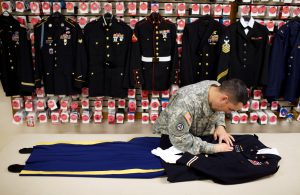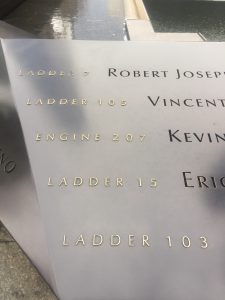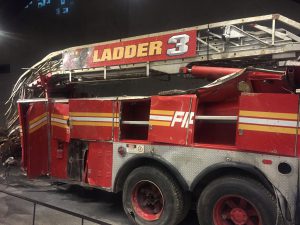 A few months before finishing my residency, I had an opportunity to spend a few days at the Dover Air Force Base Mortuary in Delaware. It was an opportunity our residency had to witness how to handle mass casualties as part of our training. Doing so required of course a mass casualty to see first hand how the remains of military servicemen and women were recovered, identified, underwent examination for cause of death and prepared for their final resting places.
A few months before finishing my residency, I had an opportunity to spend a few days at the Dover Air Force Base Mortuary in Delaware. It was an opportunity our residency had to witness how to handle mass casualties as part of our training. Doing so required of course a mass casualty to see first hand how the remains of military servicemen and women were recovered, identified, underwent examination for cause of death and prepared for their final resting places.
In March of 2001, 18 Virginia National Guard and 3 Florida Army National Guard aviators were killed in a military transport plane crash in Georgia. The C-23 Sherpa they were flying in crashed in a cotton field near Unadilla, Georgia after returning from a construction project in Florida. At the time it was the worst peacetime aviation disaster in the history of the National Guard and the worst loss of life in the Virginia National Guard since World War II.
For a few days in the week that followed the crash, after investigators recovered the remains to be sent to Dover I assisted the morgue technicians and military forensic pathologists and assistants process the remains of the men who lost their lives. I had performed nearly 100 autopsies at this point and been in morgues where multiple cases were undergoing examination at the same time. Death was not new. This was a bit unique given that many of the bodies had injuries and burns I had not seen before in our hospital practice or at the medical examiners offices I had rotated through in Baltimore, Chicago and Washington, DC.
Perhaps one of the most interesting parts of the experience was the process by which the remains are dressed in their uniforms with all of their medals and awards. A large room stores caskets and walls of uniforms and ribbons and awards that are meticulously prepared by technicians for the funerals of the deceased.
The process became routine with utmost respect and care for the deceased. I returned to the Hampton Inn each night in Dover and studied for the boards before repeating the work the next day. On my last day, I discovered a room I had not been in before that was labeled “Personal Effects”. This room had large tables lining the walls with numbers and filled with wallets, watches, personal photos, identification cards, money and keys. It was perhaps the most difficult room to stand in. The pictures of wives, families, girlfriends, wedding rings, watches, perhaps passed down from their fathers, keys to homes and offices and cars personalized the tragedy. Before walking into this room the metal boxes and autopsies were “cases” and “remains” but the watches and wallets and photos personalized those lost. The lives and memories and those they left behind.
I didn’t last very long in that room. I had to run out and get some fresh air, forget the faces and candid snapshots and personalized key chains and dog tags.
I tried not to think about that room beyond March of 2001 until a couple of weeks ago when I visited the 9/11 National Memorial in New York.
 The ponds and museum are an incredible site that pay tribute to those who lost their lives that day, in the buildings, on the airplanes, in New York, Washington and Pennsylvania. Much of the museum discusses the engineering feat of the buildings themselves, the construction and the events of that day. Newsreels, preserved photographs and newspaper headlines show visitors a minute-by-minute review of the events of the day. There are artistic renditions that many created to remember the event. Even so, it seemed very “clinical” for lack of a better word, the science, the process, damaged steel, fire trucks and maps/diagrams and video shorts.
The ponds and museum are an incredible site that pay tribute to those who lost their lives that day, in the buildings, on the airplanes, in New York, Washington and Pennsylvania. Much of the museum discusses the engineering feat of the buildings themselves, the construction and the events of that day. Newsreels, preserved photographs and newspaper headlines show visitors a minute-by-minute review of the events of the day. There are artistic renditions that many created to remember the event. Even so, it seemed very “clinical” for lack of a better word, the science, the process, damaged steel, fire trucks and maps/diagrams and video shorts.
Then there was another room. In the middle of the museum, where no photographs were allowed, a room lined by photographs of all the victims of that day, with touchscreens that allow you to search by name to find a friend or loved one. Over the loudspeaker in the room you can hear people calling out the names in an endless cycle of readings where another room provides a screen show of peoples’ lives and where they worked, what they did, where they died.
I tried to find the exit to ascend back to street level for fresh air.
The watches, wallets, wallet-sized photos and personal belongings in the morgue in Dover flashed back into my head. That room personalized the experience, made it much less “clinical” and more personal. A living tribute to those who died, beyond their names on the ponds or on message boards or in newspaper clippings.
 I went back to some of the other areas of the museum to read about the bedrock, the construction, the “slurry wall” that was used to keep the Hudson River out of the construction site, but the wall of photographs is perhaps what I will remember the most, must like the watches and wallets 15 years ago.
I went back to some of the other areas of the museum to read about the bedrock, the construction, the “slurry wall” that was used to keep the Hudson River out of the construction site, but the wall of photographs is perhaps what I will remember the most, must like the watches and wallets 15 years ago.
Watches, wallets and the wall.

































